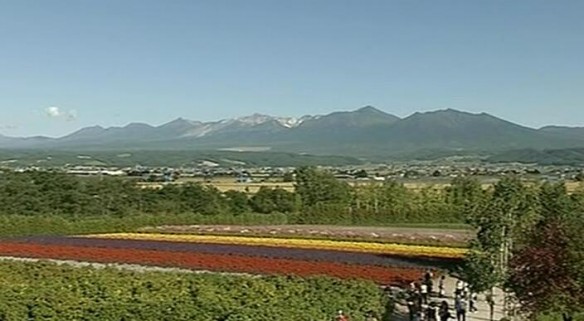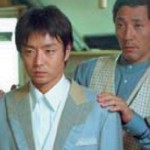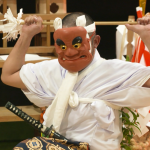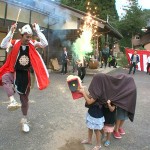TRAVEL

Hokkaido Garden Story
TRAVEL
2011
35 mins Episode(s): 1
english
English


Hokkaido Garden Story captures the story of 3 individuals who are the creators of three different, well-visited gardens in Hokkaido. This program offers depth and interesting background stories about how these gardens came to be.
First introduced is Sayuki Ueno, a famous Japanese gardener, who founded Ueno Farm in Asahikawa. Her goal from the start was to create a beautiful English-style garden. However, Hokkaido’s extreme weather patterns made it extremely challenging for her to create the garden of her dreams. It was one word of advise from a visitor that completely changed her perspective and saved her from her dilemma.
Following Ueno Farm is Tokachi Millenium Forest, created by Katsuhiko Hayashi. His goal was to create gardens and areas of nature that would allow visitors to experience nature in its purest form. However, when he opened the Tokachi Millenium Forest, his concept alone was not enough to lure in tourists. His annual visitors only added up to a dismal amount of people. Now, his site is teeming with tourists from across the country and people from over 40 countries have come to do coverage of what is offered there. This boom of visitors was sparked by one dynamic change in Hayashi’s plan.
Lastly is Farm Tomita in Furano, founded by Tadao Tomita. Furano’s lavender fields are now an indispensable part of Hokkaido’s summer scenery, but according to Tomita, there was a time when all lavender fields were close to being completely destroyed. What saved his farm was one photograph. Not many people know of this story, which he shares in the program.
First introduced is Sayuki Ueno, a famous Japanese gardener, who founded Ueno Farm in Asahikawa. Her goal from the start was to create a beautiful English-style garden. However, Hokkaido’s extreme weather patterns made it extremely challenging for her to create the garden of her dreams. It was one word of advise from a visitor that completely changed her perspective and saved her from her dilemma.
Following Ueno Farm is Tokachi Millenium Forest, created by Katsuhiko Hayashi. His goal was to create gardens and areas of nature that would allow visitors to experience nature in its purest form. However, when he opened the Tokachi Millenium Forest, his concept alone was not enough to lure in tourists. His annual visitors only added up to a dismal amount of people. Now, his site is teeming with tourists from across the country and people from over 40 countries have come to do coverage of what is offered there. This boom of visitors was sparked by one dynamic change in Hayashi’s plan.
Lastly is Farm Tomita in Furano, founded by Tadao Tomita. Furano’s lavender fields are now an indispensable part of Hokkaido’s summer scenery, but according to Tomita, there was a time when all lavender fields were close to being completely destroyed. What saved his farm was one photograph. Not many people know of this story, which he shares in the program.
Customers who watch this video also watch
-
Finding Dad
 Award of Excellence at the Media Arts Festival. Jiro, a chef, is engaged to Satoko, a kindergarten teacher. Jiro has not seen his father for 11 years, since his parents got a divorce. Jiro decides to send a wedding invitation to his father, but when his mother finds out, she...more details
Award of Excellence at the Media Arts Festival. Jiro, a chef, is engaged to Satoko, a kindergarten teacher. Jiro has not seen his father for 11 years, since his parents got a divorce. Jiro decides to send a wedding invitation to his father, but when his mother finds out, she...more details -
Railway Story: Travelling through the Revival of Tohoku
2014 50 minsDo you think the whole area of Tohoku is still a stricken region after the catastrophic tsunami, and still a forbidden place due to the nuclear plant disaster? The answer is slightly “yes”…but mostly “no”! Although there are many problems to be faced, people of Tohoku are continuing their efforts...more details -
Daidai Kagura -The Ritual Dance of Iki, the Island of the Gods-
2017 30 minsIki Island, in Nagasaki Prefecture, has about 1,000 shrines. The Iki Kagura is an ancient and sacred dance practiced only by Shinto priests and is an Intangible Folk Cultural Property of Japan. The sacred ceremony is carried out with the playing of flute and drum accompanied by dance. Every year...more details -
New Life Blossoms in an Old Village: Seven Years of Struggle and Hope
 2013 The aging of Japan's population is steadily hollowing out the country's agriculture. Realizing the gravity of the situation, a struggling farming community in Ishikawa Prefecture called Sugaike began trying to attract young residents. Hiroyuki Yago is one of the people who came. He moved from Osaka to Sugaike in order...more details
2013 The aging of Japan's population is steadily hollowing out the country's agriculture. Realizing the gravity of the situation, a struggling farming community in Ishikawa Prefecture called Sugaike began trying to attract young residents. Hiroyuki Yago is one of the people who came. He moved from Osaka to Sugaike in order...more details



